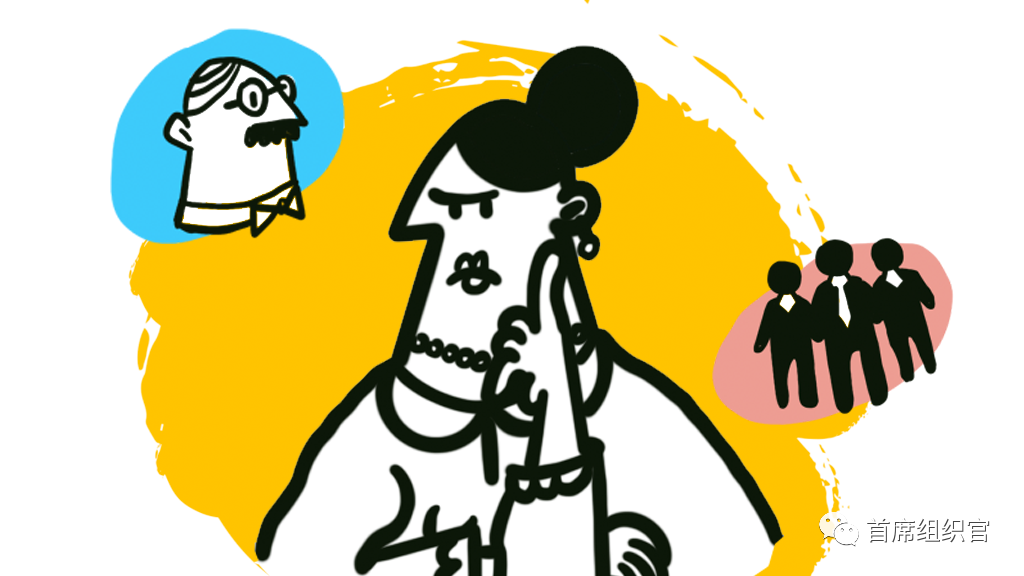The market needs a lot of offensive and strategic HR, not just professional and professional HR.
Editor’s note: This article is from the micro-channel public number “Chief Organization Officer” (ID: COO-STRATEGY), Author: Sheng Tao room.
The bureaucratic organizational structure and management model have existed for a hundred years. With the rise of individual consciousness, as the Z era enters the workplace, as the black swan events continue and occur frequently, organizations need to find new models facing the VUCA era For management mode and organizational form, please follow the latest column “Future Organization” to jointly explore and discover the direction and method of organizational evolution, and build future-oriented organizational capabilities.
Lack of offensive HR, will not be sensitive to words such as win, battlefield, strategy, tactics, weapons, innovation, etc., and cannot give yourself and the HR team under its jurisdiction a more valuable position. Lack of “offensiveness” is a common reason why HR can’t make it up.
The offensiveness mentioned in this article refers to external offensiveness and competitiveness, rather than internal interpersonal offensiveness or abilities. People who are offensive are not necessarily bluffing.
HR lacks offensiveness and will have two more direct and obvious effects.
The first and most direct influence is the relationship between HR and No. 1 position.
The lack of offensive HR thinks about risk, control, stability, etc. all day long. When encountering major events, it is easy to start with “not losing” instead of starting with “want to win”.
Each position is facing tremendous growth pressure. They generally do not want to defend first, but this does not mean that they ignore defense, but first think about offense, and then consider the balance of offense and defense. Sometimes, offense is the best defense. Some people say that a team with poor defense cannot become a champion; but don’t forget that without a good offense, the team may not even be able to make the group stage.
The HR who lacks offensiveness is often not good at making detours with the number one position. Victory or defeat is standard issue. If every time it fails, HR always plays the role of “I said it at the time”. Such HR will gradually become “pain in the ass” for the first position, that is, the kind of irritating butt pain. Instead of deep heartache.
What I think is “win”; what you think is “not lose”. Under this kind of relationship, the kind of “swift ambition and common vision of the future” simply cannot emerge. Such HRIt is difficult to resonate at the same frequency and conspire strategically with No. 1 position.
The second direct impact is that the lack of offensive HR makes it difficult to identify high-level talents, and it is also difficult to establish talent selection for training high-level talents. Use stay system.
Although HR does not specifically look at people (business executives are the main body looking at people and employing people), the talent selection and retention system they have established will undoubtedly reflect HR’s talent aesthetics. How can HR who don’t understand offensive appreciate and attract offensive talents, as well as those who attack and defend first?
Related to this, the aesthetics of HR’s talents and the aesthetics of talents in the No. 1 position cannot mutually promote each other, but tend to form a mutually offsetting relationship. Over time, HR will gradually be marginalized as an operator.
The above two effects are relatively easy to see and understand.
However, HR lacks offensiveness and has several more profound effects.
The first point is the definition and selection of the battlefield.
In other words, where to play/compete, and what?
The HR who lacks offensiveness can easily confine themselves to the six-module three-pillar one-acre three-point land. Offensive HR can define their battlefield and strategic intentions from a broader perspective, a greater sense of space, and a longer sense of time.
For example, shifting from the HR perspective to the “overall organizational perspective” expands the space on the battlefield. How can my organization beat another organization? The competition has changed from “a group of people versus a group of people” to an asymmetric competition between “a group of people + strategy + values + process mechanism system” and “another group of people”.
For another example, on the surface, I seem to be competing with you for talent (such as campus recruitment) and professional resources (such as headhunting resources). But in fact, my chosen battlefield and intention is to establish “the ability to develop potential students into competitive high-level personnel”, which is what we usually call “internal hematopoietic ability.” Where you can see, in the short-term time and space, everyone’s actions seem to be similar, but behind the larger time and space, their respective definitions of battlefield and strategic intent are very different. There are superficial, internal, long-term, and short-term. The level of battlefield and strategic intent is easier and richer.

